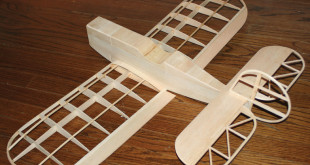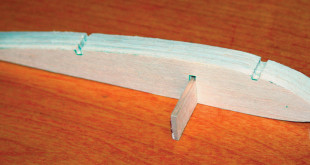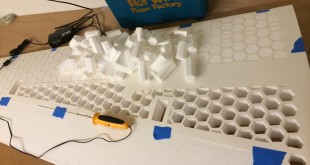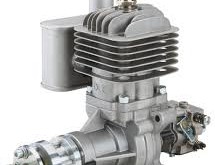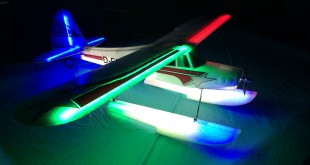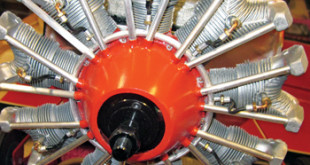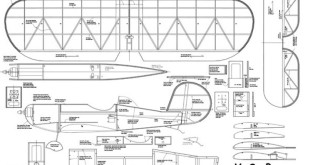For decades experienced RC model air-plane builders, especially scale builders, have relied on fiberglass as a tough, easy-to-apply balsa covering material that resists dings and scratches and will accept most paints.
Read More »How To’s
Crossover Tips & Tricks
At the risk of sounding too cliché, getting older really does make you wiser. Honestly, it’s a matter of experience. Over the years I have made so many mistakes and wasted so much time and money that I was finally forced to find solutions to my modeling concerns. Now, while much of what follows is what I personally discovered
Read More »Scaling Out The Atomik RC/Sonic Modell B-17 Pt. 1
Recently I devoted several weeks of workshop time to determine just how far I could go with fiberglass-and- paint resurfacing and refinishing of a typical large foam/ARF electric powered RC scale warbird…in this case the 61” wingspan J-Power P-51-D available from Atomik RC.
Read More »Cut A Perfect Cowl
Everyone knows that the “A” in ARF stands for “Almost”. For some kits, that can be a pretty big “A”! While the majority of ARF’s have most of the major components built, there are significant variations in the amount of time and skill required to finish them well. There is also the issue of instruction manuals being, shall we say, “loosely” translated Chinese building instructions.
Read More »Thermals 101
The one constant question that is asked about sailplane flying is how do you know when you have found a thermal or lift? I’m going to explain that process for you, but first, what is a thermal?
Read More »Conceal Control Horns And Pushrods
In the world of RC scale model airplane building, one of the trickiest problems is how to “hide” external pushrods and control horns inside wing surfaces. With tail control surfaces these devices can normally be concealed within the fuselage. But on wings, which are often very thin, the problem is far more difficult.
Read More »Building for Beginners Part III
By Scott Copeland Time for the two-dimensional world to add a third dimension! In the first two parts of this column (Fly RC April and May 2013) we’ve studied our plans, gathered our tools and carefully cut out …
Read More »Building for Beginners – Part 2
Words by Scott Copeland Now we are cooking with gas! In our last installment, we discussed how to choose a building project and pointed out how to read the details of the plan. We have done some studying …
Read More »Lightening Foam Core Wings
It sounds odd wanting to lighten foam; especially when foam (at least to me) isn't thought of as being heavy. However, in terms of a large-scale plane, the wing cores can add up to be over four pounds. The roll of foam in a large scale wing is to provide aerodynamic shape and a little strength. A foam core wing is mostly dependent on its balsawood sheeting for its strength, where an all-wooden wing relies on spars to keep things rigid. The strength of a foam core wing can be increased by adding some structure and composites to distribute forces and reduce stress points. Ultimately’ you’re looking for the wing to be stronger and lighter than before the lightening process.
Read More »Complete Teardown and Rebuild of a DLE 30
Perhaps the most ubiquitous gas-powered engine in the RC market, the DLE 30 has been around for a good while and remains a standard in the ¼-scale arena. Well known for reliable and consistent operation with a hefty dose of power to spare, the DLE 30 has found a home in all types of airframes from trainers to sport models and even multi-engine warbirds and civilian air buses. If treated properly, this engine can serve you well for hour upon hour of operation, but even the most conservative pilot will eventually need to crack that case open for a little maintenance or repair work.
Read More »Custom LED Install
I have to admit that I’m not the first to light up a foam airframe, but it’s hard to say (for me anyway) that I didn’t have the most fun doing it! It all goes back to Joe Nall Week about five years ago. A group of us had a bunch of Sea Winds and we took over the float pond. In the evening, a couple of the guys acquired “new” LED lighting strips (that were just introduced to the market at that time) and stuck them on their Sea Winds so they could tear up the 3D float pond that evening. As cool as it was, the drawback was that all you could see were the lit individual LEDs themselves. It wasn’t until the next year when we bought a bunch of Multiplex Fun Cubs on floats that we really got it figured out.
Read More »Detailing a FTE Scale Radial Engine Casting
A while back I wrote a two-part article in Fly RC magazine explaining how I scaled out the big 1/6-scale WACO SRE ARF from SIG. That article was essentially about getting rid of the plastic covering, getting the servos inside where they belong on any self-respecting scale job, and messing with the overall appearance by adding things like scale tail surface cross sections, fuselage stringers, door outlines and the like.
Read More »Building for Beginners – Part 1
For those new to the RC airplanes, all I can say is that “You’ve got it easy!” At no other time in the history of radio control aircraft has “the fruit” hung so low. The ARF and ready-to-fly market is enormous with offerings that range from micro-size indoor planes to giant-scale monsters.
Read More » Fly RC Magazine WE LIVE RC
Fly RC Magazine WE LIVE RC

